All about the famous song, Home Sweet Home
Words by John Howard Payne, music by Henry Rowley Bishop.
With Complete Sheet Music Score and lyrics arranged for voice and piano.
| Share page | Visit Us On FB |
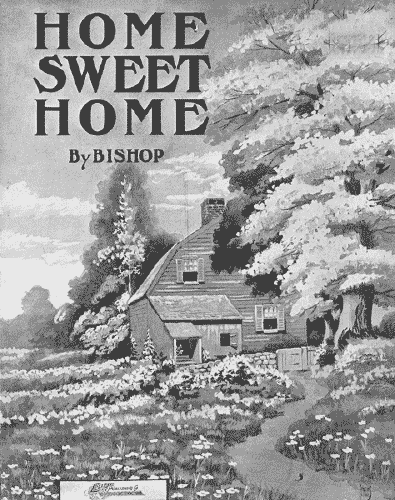 |
Payne seems to have had quite a varied career starting out as a theatre critic at age 14, then as a playwright and child star actor. He became a friend of Washington Irving and Charles Dickens, was a staunch defender of the Cherokee Indians as they were forced from their homes in Georgia to Oklahoma on the "Trail of Tears" and a finally a diplomat who died at his post as American consul general in Tunis.
Payne claimed in his memoirs - published in London in 1815 to have been born in New York but other evidence seems to suggest that his birth place was the cedar-shingled house on the East Hampton village green owned by his grandfather, Aaron Isaacs, and which now houses the The Home Sweet Home museum. The house was built around 1670, probably by a man named Robert Dayton. By 1740 or so, it was owned by Aaron Isaacs, a Jewish peddler who found his way from New York to what was then called Maidstone, who grew prosperous, married Mary Hedges, member of a founding family, and converted to Presbyterianism. The Isaacs had 13 children, of whom the fifth, Sarah, married a widower named William Payne, whom Isaacs brought to East Hampton to teach in the newly founded Clinton Academy, the first secondary school in New York State.
There is little doubt that Payne spent significant parts of his early life at his grandfather's house and it seems likely that this was the home he had in mind when when he wrote the song. Payne’s first employment was in New York as a clerk by day and a theatergoer by night to collect material for his reports in The Thespian Mirror, a weekly journal of theater criticism. Not content with working 12 hours a day and writing a weekly magazine, Payne wrote and produced his first play,"Julia; or The Wanderer, a comedy in five acts," at the Park Theater on Feb. 7, 1806.The play caused an uproar - it's full of double entendres(1) about the heroine, a 16-year-old orphan besieged by rakes, one of whom says "Damme" several times. "Julia" got only one performance, and Payne earned virtually nothing. Wealthy patrons gave him a scholarship to Union College in upstate Schenectady. But he yearned for the stage, and on Feb. 24, 1809, at age 18, made his debut at the Park Theater as Young Norval, the hero of John Home's "The Tragedy of Douglas; or The Noble Shepherd." Payne was success and he appeared in five other plays that season, and earned the immense sum of $1,400 in a performance of "Romeo and Juliet." The following years were a roller coaster of fame and failure. He toured the United States, attended one of Dolly Madison's White House parties, and in 1813, during the War of 1812, sailed to England - where he was immediately arrested and jailed for two weeks until his passport was cleared.
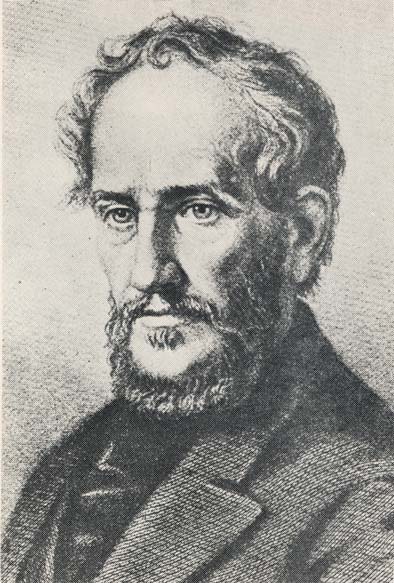 John Howard Payne John Howard Payne |
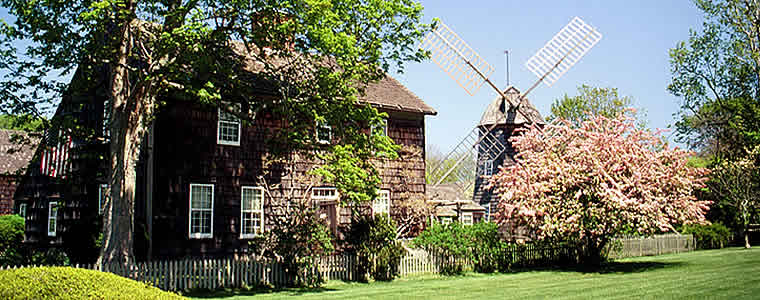 The Village of East Hampton NY was one of America's earliest English settlements, founded in 1648, and is where you will find the "Home Sweet Home" of John Payne's childhood and which may have been the inspiration for his famous song. The Village of East Hampton NY was one of America's earliest English settlements, founded in 1648, and is where you will find the "Home Sweet Home" of John Payne's childhood and which may have been the inspiration for his famous song. |
Payne stayed in Europe for the next 20 years, acting, writing, producing, visiting Paris and becoming an important member of the English literary world. It was in his play "Brutus" that the tragedian Edmund Kean became a tremendous star in 1818. Payne himself was thrown into debtors' prison after a bad season running the Sadler's Wells theater. There he wrote another play whose profits got him out of jail. In Paris during 1822, Payne saw a ballet entitled "Clari; or the Promise of Marriage" and quickly wrote some dialogue. Composer Bishop saw the ballet, too, and suggested they turn it into an operetta. Payne was living at the time in the very elegant Palais Royal, but he was writing letters to his siblings in New York about "my yearnings toward Home."
And so, on May 8, 1823, "Clari; or the Maid of Milan" premiered at London's Covent Garden theater. It was a hit, and publisher John Miller issued sheet music for "Home, Sweet Home" separately. It sold as many as 100,000 copies in the first year; Payne was paid about 100 British pounds for "Clari," and got nothing for the song. As playwright, producer and literary figure, Payne continued high in the public's eye for the rest of his life. At one point he carried a discreet torch for Mary Wollstonecraft Shelley, author of "Frankenstein." He loved her but she loved Washington Irving, who was not interested. Payne returned to America in 1832, toured the country in triumph, traveled with John James Audubon, lobbied Congress to keep the Cherokees from being forced from their ancestral home. He was eventually appointed consul general in Tunis, a post he occupied twice in the period from 1843 until his death in that city on April 9, 1852.
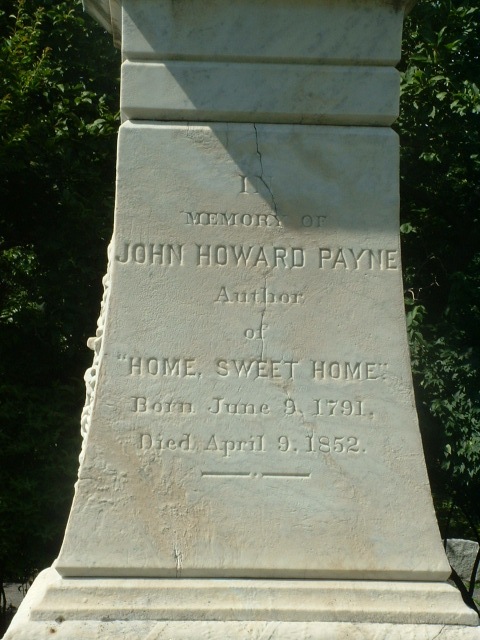 |
His song itself lived on - during the Civil War the armies of both sides, encamped on the battlefield, would sing it together at night. Jenny Lind(2) sang it during her tour of America; Adelina Patti(3) sang it for President Abraham Lincoln in the White House. The popularity of this, one of the most-loved songs in America, can be witnessed by the film of The Wizard of Oz (1939) when Dorothy, played by Judy Garland, quotes its refrain. In 1883, financier William Wilson Corcoran, founder of the Corcoran Gallery, got Payne's body exhumed and brought to the United States. It arrived first in New York, for one procession, and then, in a massive ceremony attended by President Chester A. Arthur and Gen. William T. Sherman, was interred in Washington's Oak Hill Cemetery.
- A word or expression capable of two interpretations with one usually risqué meaning.
- Johanna Maria Lind (October 6, 1820 – November 2, 1887), better known as Jenny Lind, was a Swedish-born opera singer, often known as the "Swedish Nightingale". She is known for her performances in soprano roles in Sweden and Europe, as well as for an extraordinarily popular tour of America beginning in 1850, and for her philanthropic work.
- Adelina Patti (February 10, 1843 - September 27, 1919) was one of the most highly regarded opera singers of the 19th century. Giuseppe Verdi was not alone in calling her the greatest singer he ever heard.
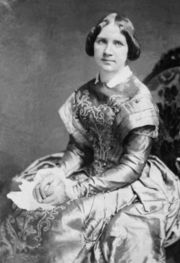 Jenny Lind |
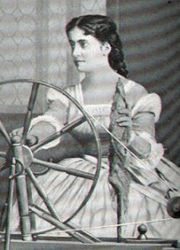 Adelina Patti | 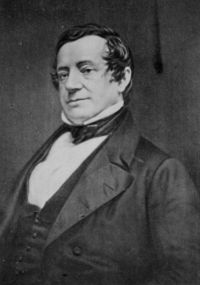 Washington Irving |  Payne's Home in East Hampton NY |
You may also be interested in other Older Popular Music related items on this site:
And some more specialised items
1940s Top Songs, 200+ songs popular during world-war 2, from Vera Lynn, George Formby, Gracie Fields, Glen Miller, the Andrews Sisters etc WW1 Songs, 190 Lyrics for songs from the World War One(WW1) Era(c1900-1925), also with PDF GEORGE FORMBY SONG BOOK,190 songs some with chords and MP3 of original audio recordings, inc PDF NOVELTY SONGS, 300 song lyrics, of popular comedy, parody and one-hit-wonders, with PDF PROTEST SONGS, 380 songs about anti-war, civil-rights, injustice, racism, social exclusion etc. lyrics & chords with pdf THE SKIFFLE SONG BOOK,200+ greats from Lonnie Donegan,The Vipers,Chris Barber, Chas Mcdevitt and other Jug and Skiffle bands